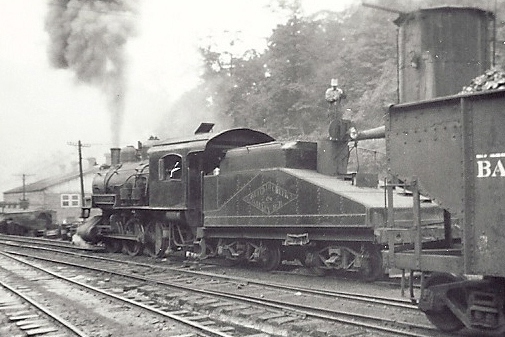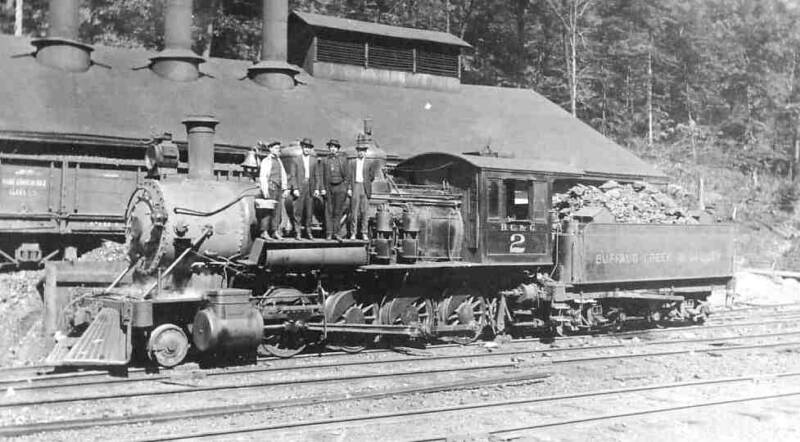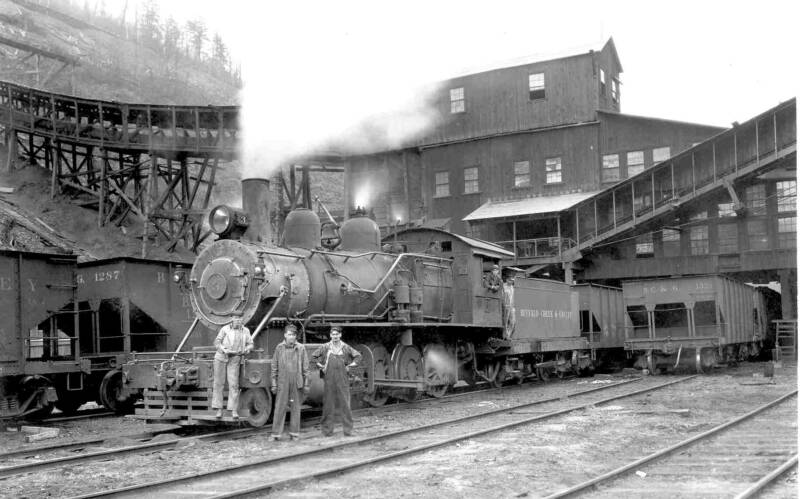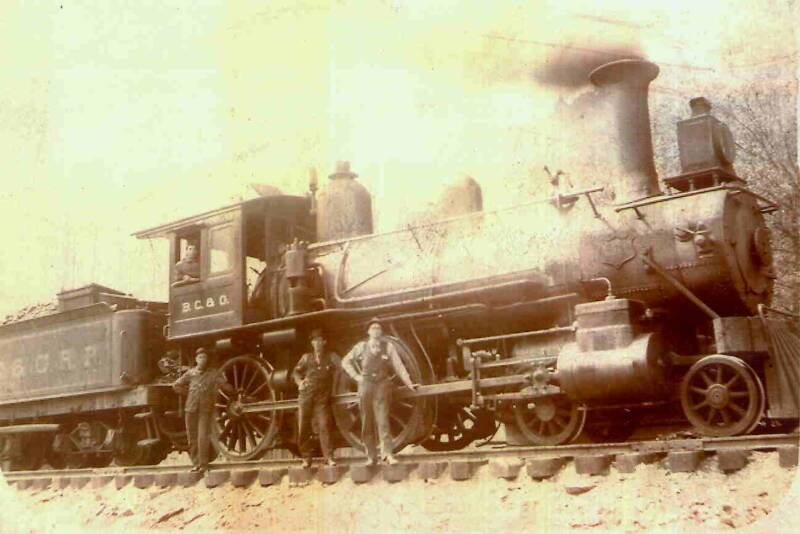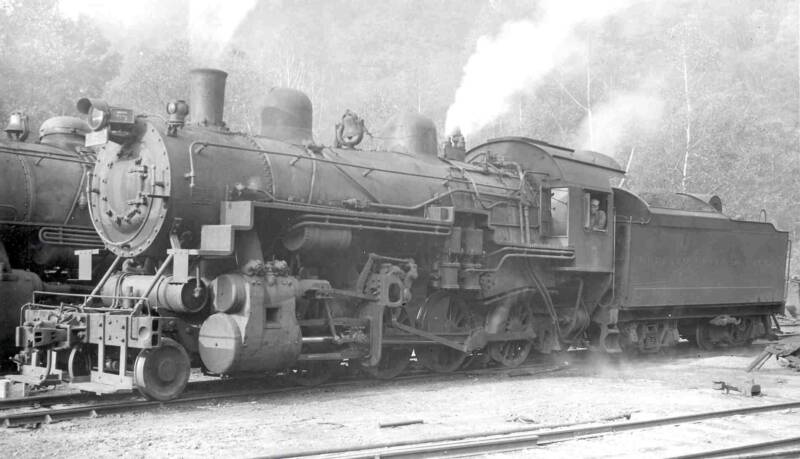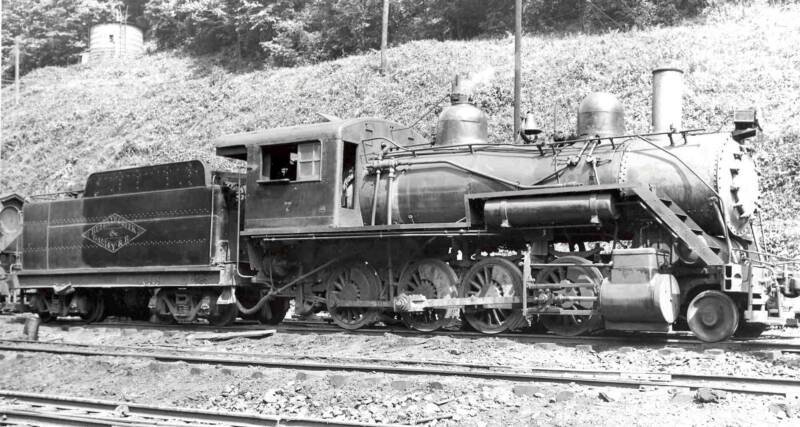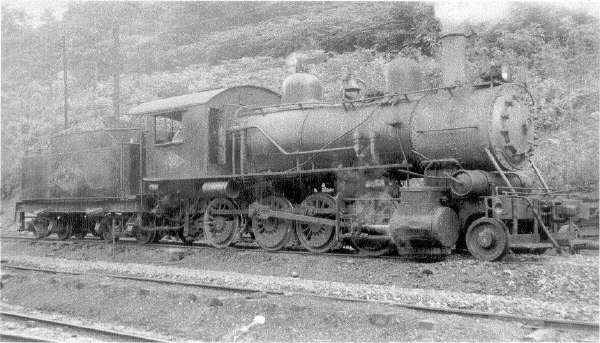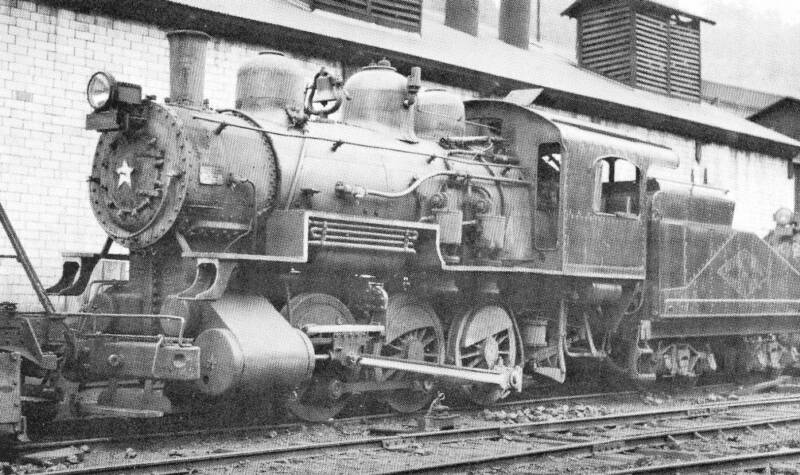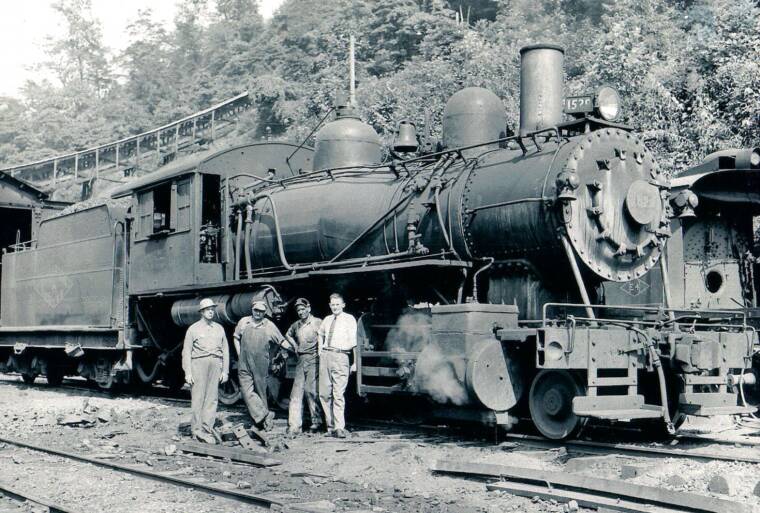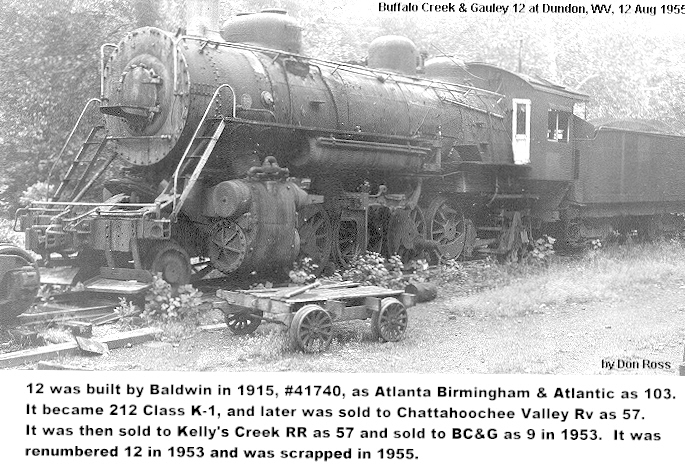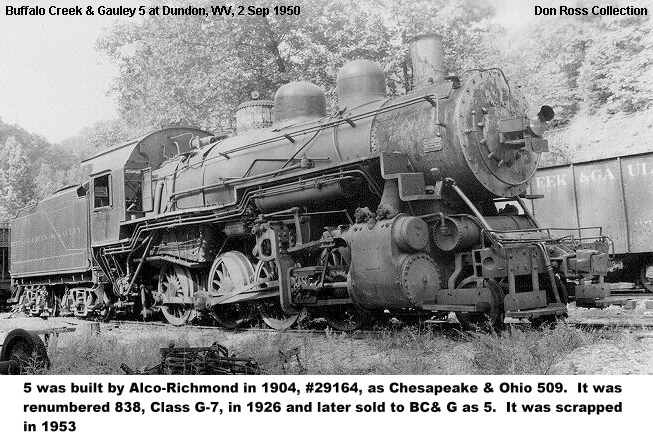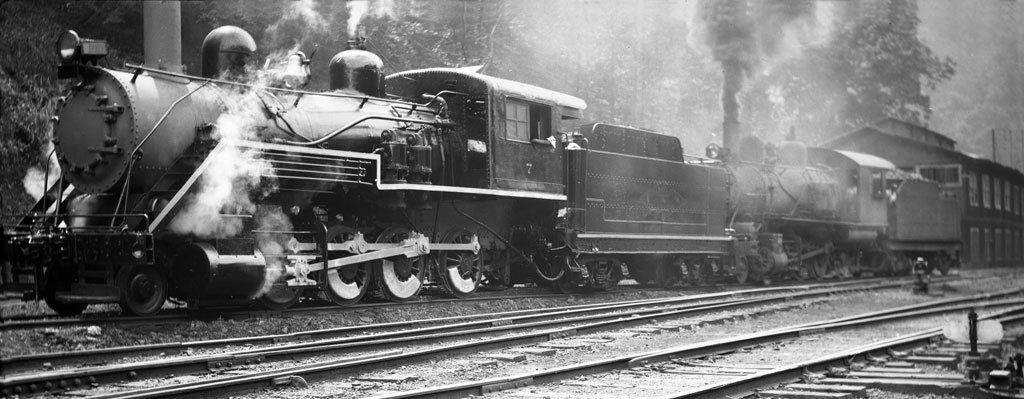Older BC&G Locomotives
BC&G #6 and #7 were "sister" engines, (c/n 16145 and 16147 respectively) both built in 1898 by Baldwin making them the oldest engines the line ever had save for #1. Both came from the B&O.
According to Ed Kirstatter's research in William Edson's book Steam Locos of the B&O - An All-Time Roster, 1992, BC&G #6 came to the BC&G in 1925 from the B&O where it was #1527.
Notice the diamond logo on both the tender and cab...pretty snappy!
The ubiquitos pilot-mounted air tank is also present
The focus of this website is the later years of the BC&G. Consequently, for the older engines, I'm including just one representative photo. This page covers engines #1 through #8, except #4 which was in service through 1965.
BC&G #6
BC&G #2
BC&G #1
BC&G #3
BC&G #5
KC&NW #57 / BC&G #9 (?)
Photographer and date unknown - Sigman website
Date 4-12-28, Photographer unknown - Charles Dodrill collection
Martin Hansen has confirmed via the Baldwin Locomotive Works Records Of Construction Numbers that BC&G #2 was built in October 1911 as c/n 37163 and sold new to the BC&G. This is new information as most sources show #2 was acquired second hand from the B&O. This photo of #2 in front of the Widen powerhouse was perhaps taken soon after the enqine was acquired, as the mine was opened in the same year the engine was acquired, 1911. #2 joins #4 as the two rod engines purchased new for the railroad.
Harold Vollrath collection - October 1940
Harold Vollrath collection - July 1949
BC&G #7
The engine number is just visible on the headlight. The lettering on the tender can be read by enlarging the photo.
This is the first appearance of the pilot mounted air tank. Most subsequent BC&G engines had them installed.
Based on the unusual shape of the dome, the engine in the background is Consolidation #4.
According to Karen Parker, C&O Historical society, the engine came to the BC&G in July 1933 for $4000. It was not scrapped until 1953.
Enlarge this photo to confirm that it is BC&G #3. Notice that it is fitted with marker lights, a relative rarity on the line.
This photograph is a classic in terms of composition and clarity, obviously taken by a professional. It was taken on the back side of the tipple with the conveyor to the South Mine is going off to the left. This picture date from the 1920's and those are BC&G hoppers in the photo.
The 1920 Annual Report indicates a locomotive was purchased during that year as a backup to #2 and was not used 'continuously. The references must be to this engine.
This is by far the best photo of BC&G's first engine I've seen. There is no number visible in the photo but it must certainly be #1. It was the only American type engine the BC&G ever had.
Some sources say it was acquired second hand from the B&O, but Ed Kirstatter says that there is no reference in Edson's "Steam Locos of the B&O - An All-Time Roster" of any C&C 4-4-0 ever going to the BC&G.
Notice the striping on the tender of this rather handsome engine. The engine survived until 1920.
Some sources suggest that two coaches were acquired with the engine.
Marie Spencer collection - Date unknown
Photographer and date unknown
The family resemblance of #6 #7 is most obvious in the configuration of the smoke box front, the cylinder construction, and possibly the tender. Beyond that, it's hard to tell #7 is only two construction numbers from #6. The inset photo shows the engine as B&O #1529. It came to the BC&G in 1946.
It's hard to see without enlarging the photo, but there is an air tank on the pilot of this engine also.
BC&G #8
A bit of serendipity on this one! Cody Burdette, among others, have reported that there was a heavy Mike (#57) purchased from KC&NW, but I had never seen a photo of it. Cody said it had a cracked saddle which the BC&G crews tried to fix but were unsuccessful. The engine was never used by the BC&G so it's not surprising it wasn't photographed.
.According to the caption on this photo, the engine is ex-KC&NW #57...and BC&G #12. The caption states that in 1953 it was BC&G #9, and in fact, the 1950 Financial Report lists a #9 purchased that year along with #13 and #14. The construction number matches the number given by other sources as BC&G #9.
Since it never went into service, it was probably never lettered for the BC&G or numbered #9 and there's no other evidence of it being numbered #12.
The photo on the left is from page 20 of the Warden BC&G book where it is incorrectly referred to as an 0-8-0. It is clearly an 0-6-0, which would make it one of the smallest engines ever rostered by the BC&G. It apparently was acquired in 1945 and was retired just 5 years later. It was scrapped in 1954.
Don Ross Photo - 1955
Photo from the collection of Loretta Samples
This photograph is from the collection of Loretta Samples, but the photo and the captions were put together by Don Ross. For a while there was some discussion about whether this photo was, in fact, #5. It looks like it has a third dome on the boiler even though many other features are identical.
Cody Burdette, once again, has resolved the issue by noting that the steam dome cover has simply been removed and set over the bell giving the appearance that there are three domes.
For some reason the number plate under the headlight reads #3, but this is clearly not the much older #3 above.
Thanks, Cody!
This photo by James Greene taken in July 1948 shows #7 and #6 in service at Widen. It appears they are coupled together forming a double-header. Of particular note is the rather unusual (and unsightly) paint scheme on #7. Fortunately, The Green photo shows the other side of the locomotives.
James Green photo- July 1948
This photo of #8 was taken by James Greene in July/August of 1948. It shows The locomotive in service at Widen. From these two photos it is not possible to say definitively whether this engine was used in gob service, as a mine switcher, or possibly even to haul smaller strings of hoppers to Dundon.
James Green photo - Summer 1948
Nate Proctor found some information on #8 in a book by Philip Shuster entitled "C&O Power". The engine was built as one of a group of 10 Class 7 engines by ALCO Richmond in 1905. It was the last of the series and was built as #34. It was sold to Westvaco in 1937 and then at some point it went to the BC&G.
